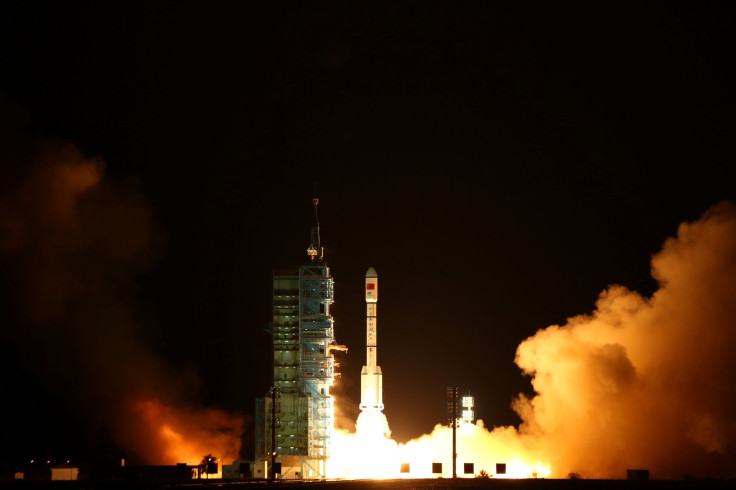Chinese Space Program: China Brings Electric Propulsion To Satellites With Ion Thruster

China launched its newest communications satellite, Shijian-13, on Wednesday. Other than a throughput capacity that exceeds all of the country’s earlier communications satellites taken together, Shijian-13 was another first for the Asian powerhouse: it is propelled by an ion thruster, which coverts solar energy into fuel.
The ion thruster was indigenously developed by Chinese researchers, who spent about five years on it, Chinese daily Global Times reported. The thruster reduces the amount of jet propellant needed to be carried by the spacecraft for it to carry out maneuvers in space, potentially improving efficiency by up to a factor of 10, according to engineers from the Lanzhou Institute of Physics, which built the thruster.
Read: First Chinese Cargo Spacecraft Planned For April Launch
The country has a very ambitious space program, including building its own space station and landing on the crewed mission to the moon, and earlier in the year, it declared a November mission that would return samples from the moon.
Closer in time, the launch of the country’s first cargo spacecraft is currently scheduled for April 20. Tianzhou-1 is the first cargo vessel independently built by China, and can carry a payload of up to six tons. There is one capsule each for carrying the cargo and the propellant, and the spacecraft will weigh about 13 tons at liftoff. It has been designed to stay in space for up to three months.
The launch of Tianzhou-1 — to take place from facility at Wenchang, China, using an indigenous Long March 7 rocket — will also showcase China’s capability to resupply and refuel the Tiangong-2 space laboratory, which was launched in September 2016. Along with Tiangong-1 and other components to be launched by 2022, the space lab would have formed Tiangong-3, China’s own orbiting space station. But those plans seem to be up in the air after Tiangong-1 malfunctioned; it is expected to fall to Earth this year, but the time and place it will fall are not known.
Despite the Tiangong (which means heavenly palace) setback, the country has made big strides in its space program. The first Chinese astronaut went beyond the atmosphere only in 2003, but it has already landed a rover, Jade Rabbit, on the moon — one of the only three countries to do so — in 2013. The rover, however, developed problems soon after. Two astronauts also spent a month aboard Tiangong-2 in 2016.
© Copyright IBTimes 2024. All rights reserved.




















